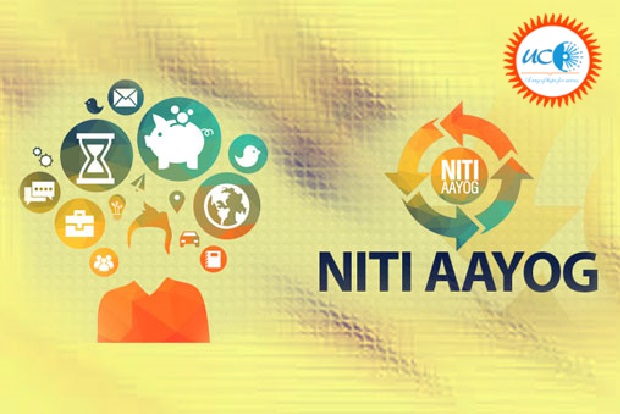Niti Aayog has transformed the developmental approach in the country from planning to strategizing and from top-down to bottom-up policy making. Discuss the statement with relevant examples.
Approach:
- Introduce Niti Aayog and its function in transformation first.
- Write a section about how Niti Aayog has changed planning into a strategic strategy before writing the rest of the body.
- Then, describe Niti Ayog’s bottom-up strategy in a section.
- Write points that reference Niti Aayog criticism last.
- Finally, stress the importance of developing independent evaluation capabilities.
The government of India’s public policy think tank is called Niti Aayog. It differs from the former Planning Commission in that it promotes national and regional development through techniques like cooperative and competitive federalism, the Vision-Strategy-Action Plan, etc. The development method has changed from planning to strategizing in the following ways thanks to Niti Aayog:
- Instead of the restrictive five-year model of the Planning Commission, it has developed longer-term objectives such as a 15-year vision, with a 7-year strategy, and a 3-year action plan.
- In areas that are crucial from a strategic perspective, Niti Aayog has shaped policy. Examples include the National Digital Health Blueprint and the Draft Battery-Swapping Policy.
- It broadens conversations about significant issues, from ecology to technology. For instance, Responsible AI for All and the Handbook on Sustainable Himalayan Ecosystem.
- It is establishing the timeline for important reforms such the Farmer Friendly Reforms Index, Agriculture Marketing, and Disinvestment.
- Niti Ayog is devising effective development strategies. E.g., National Nutrition Strategy, POSHAN Abhiyan etc.
- Niti Aayog has changed the top-down approach of developmental policies into a bottom-up
- In the spirit of cooperative federalism, it unites CMs, Lt. Governors, and PMs on a single platform through its governing council.
- In contrast to the planning commission’s strategy of consulting after the plan is written, extensive stakeholder consultations during the policy-making process. For instance, regional SDG consultations, the Niti Forum for the Northeast, etc.
- It is broadening the application of industry best practises. Examples include the Compendium of Best Practices for Water Management.
- It has adopted an approach of measurements and indexing for monitoring progress based on
- ground-data instead of helicopter approach. E.g.,State of Health Index, National Multi- dimensional Poverty Index etc.
- Niti Aayog has included professional advice in the formulation of policies.. E.g., initiatives like SAMAVESH for partnership with research institutions.
However, Niti Aayog’s approach to development is also criticized on the following grounds:
- Niti Aayog is referred to by critics as “old wine in a new bottle.” Its duties don’t offer a fresh take on development; rather, they show continuity with the planning commission.
- States have expressed dissatisfaction that their issues are not being considered. For instance, in governing council sessions, CMs sometimes do not have enough time to speak.
- Because it is a government think tank, its independence as a body for formulating policy is questioned.
- Niti Aayog has not been able to stop the economy’s long-term downturn. For instance, GFCF has consistently decreased since reaching a high of 36% in 2010.
E.g.,GFCF has been on a consistent decline since the high of 36% in 2010.
Niti Aayog has brought in new methods of cooperative learning and implementation along with a strategic vision. Capacity building for independent evaluation of policies and course-correction are needed to speed up its transformational role.






